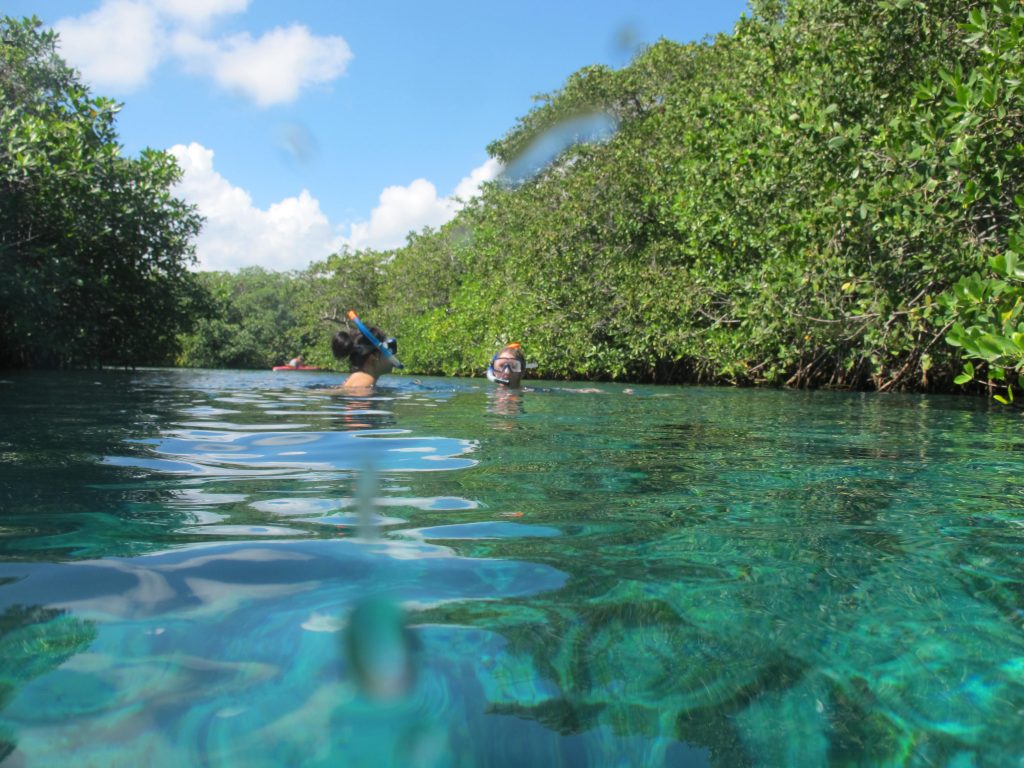 < Back to tours
< Back to tours
What is the Mangrove? Discover Tulum natural wonders
Mangroves are various types of trees that grow in saline coastal sediment habitats in the tropics and subtropics, mangroves survive to extreme environments. They belong to the family of plants Rhizophoraceae, and can tolerate broad ranges of salinity, temperature, and moisture, as well as other key environmental factors that only a select few species can take. Across the globe the location of mangroves usually runs parallel to coral reefs.
The relationship between the two is clear: mangroves thrive in brackish, nutrient-rich waters, while coral reefs thrive in clear, nutrient-poor waters. Mangroves act to purify the water from human wastes and pollutants, and in doing so, coral reefs are less effected. The coastline is protected because the roots of mangroves act to trap sediments that would otherwise be washed back out by the waves.
Moreover, mangroves provide a habitat for many different species of animals, including bats, lobsters, manatees, and birds. The roots and branches of mangroves provide an ideal site for animals to feed, mate, and give birth.















 Follow us on Facebook
Follow us on Facebook Check Tulum store on Trip Advisor
Check Tulum store on Trip Advisor